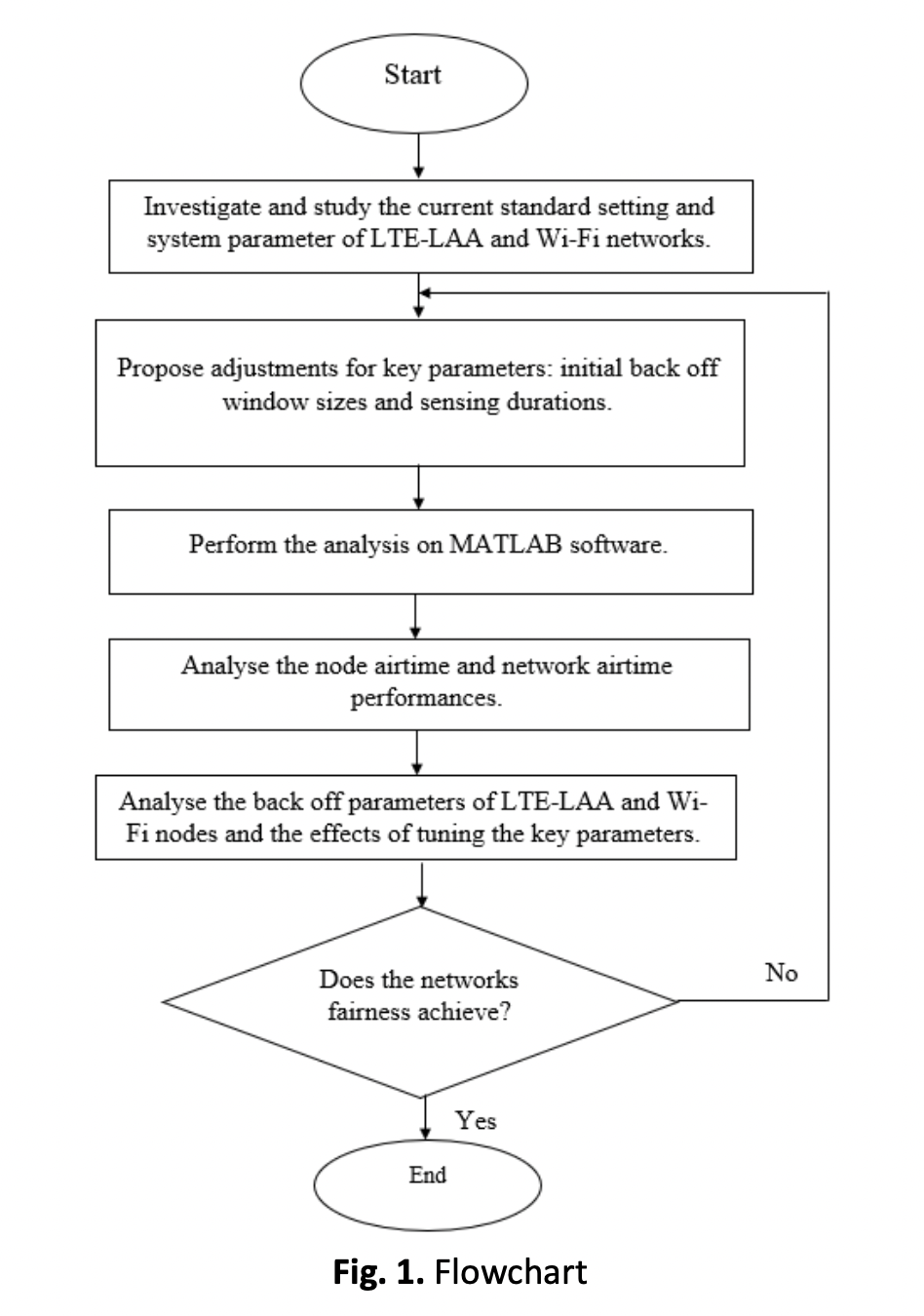Proportional Fairness for Long-Term Evolution-Licensed Assisted Access (LTE-LAA) with Wi-Fi Coexistence in Unlicensed Spectrum
DOI:
https://doi.org/10.37934/araset.41.1.7689Keywords:
LTE, Licensed Assisted Access (LAA), Wi-Fi, Integration, Unbiased proportional, Unlicensed spectrumAbstract
Long-Term Evaluation-Licensed Assisted Access (LTE-LAA) has good potential for fair coexistence with Wi-Fi in an unlicensed spectrum. Though the LTE-LAA utilizes the same listen before-talk technique as the distributed coordination function in IEEE 802.11, it utilizes completely different parameters and transmission durations. For this reason, a fair coexistence between LTE-LAA and Wi-Fi leaves an open question on how the LTE-LAA network should choose its parameters. To tackle this issue, an analytical framework considering the effects of varying important parameters, which are the different initial back-off window sizes, the numbers of sensing durations, the maximum back-off stages, the number of retransmissions and the transmission opportunities for LTE-LAA and Wi-Fi nodes on their performances has been developed. The node and network airtime performances are evaluated by using the current standard parameters setting to see how this setting affects the node and network airtime performances. From there, optimal settings of the initial backoff window size and number of sensing durations are applied by using the obtained node airtime equation that is derived from the Markov renewal process and evaluated as functions of system parameters. The optimum initial backoff window size and number of sensing durations of LTE-LAA are evaluated and verified by the calculation and simulation using MATLAB software. The analysis shows that LTE-LAA maintained unfair coexistence with Wi-Fi by using the current standard parameter setting as its initial back off window size or sensing duration. But in contrast, using the optimum initial backoff window size and number of sensing durations of LTE-LAA shows that they can maintain proportional fairness. It is unconcealed that the initial backoff window size tuning of LTE-LAA carries a high possibility of achieving fairness because it needs less system data and achieves a higher exactness result.
Downloads


























